Macro Highlights – The Best of 2022
In 2022, I spent a little more time exploring the urban microfauna. I was also an instructor at BugShot Ecuador 2022 and had lots of lifers from the Amazon and cloud forests. I also resumed some workshops in the field, while most of my lectures were still conducted online. All in all, I found myself playing around more with my wide-angle relay system for the most unique perspectives.
Here are 100 of my most memorable photos from 2022. Hope you enjoy them as much as I had fun taking them.
Macro Equipment
Most of the photos featured here were photographed with my entry-level Micro Four Thirds rig, with a few using my full frame Nikon system.
Micro Four Thirds Setup
- Olympus OM-D E-M10 Mk4
- Laowa 50mm f/2.8 2x Ultra Macro APO [Review]
- Meike MK-320P Speedlite with a DIY diffuser and reflector
Full Frame Setup
- Nikon D850
- Tamron AF 90mm f/2.8 SP Di macro
- Raynox DCR-150
- Meike MK-MT24 [Review] mounted on FotoPro DMM-903s with extra MK-R200 wireless macro flashes (4 mounted, 1 handheld)
Most of my wide angle fisheye photos were taken with the following relay system.
- Nikon D850
- Meike MK-MT24 [Review] mounted on FotoPro DMM-903s with extra MK-R200 wireless macro flashes (4 mounted, 1 handheld)
- Laowa 100mm f/2.8 2x to Infinity Ultra Macro APO Lens
- Raynox DCR-150 and Raynox DCR-250
- 2.1mm cctv lens (no brand)
2022 Macro Highlights
Daddy-long-legs spider (Artema atlanta)
Early in the year, Paul found the largest daddy-long-legs spider in Singapore. The body length alone is about 10mm, so imagine the size with its lanky legs! For other pholcids, check out Pholcidae Checklist: Daddy-Long-Legs Spiders.
Comb-footed spider (Yaginumena sp.)
During a visit to Pulau Ubin with Paul Zborowski from Australia, we found this Yaginumena with an exceptionally high clypeus. For other theridiids, check out Theridiidae Checklist: Comb-Footed Spiders.
Leafhopper (Xestocephalus sp.)
Really tiny leafhopper (2-3mm) with stout macrosetae along its hind tibia and covering its posterior end of the abdomen. For other cicadellids, check out Cicadellidae Checklist: Leafhoppers.
Tortoise beetles (Cassidinae spp.)
One night, I found 3 species of tortoise beetles on the same plant and posted it on Twitter. People seemed to like it and the post had over 72k likes. Look closer at the first photo and you’ll find a wasp and several mites sitting on the beetle’s elytra. For more cassidines, check out Cassidinae Checklist: Tortoise Beetles.
Wagler's pit viper (Tropidolaemus wagleri)
Had some time with a female Wagler’t pit viper, and managed a wide-angle shot with its tongue out, close up of the inside of its pits, and with its entire body in the frame. The lens was about 20mm away from the snake’s eyes.
Wagler's pit viper (Tropidolaemus wagleri)
She obviously wasn’t too happy with me poking the lens at her face. This was shot with a normal macro lens and what most other close-up shots would look like.
Lace bug (Alloiothucha artocarpi)
With the kind assistance of Ee Hean, I was able to document most of the known lace bugs in Singapore and published a little tingid checklist. Most of the tingids on record were found in urban environments and I found at least 2 species right at my doorstep!
Tube spittlebug (Machaerota cf. notoceras)
Quite a common spittlebug, but this has eluded me for a very long time. Found that it was common along a parking lot and managed to quickly get some shots prior to a separate field trip. The dorsal spine somewhat reminds us of a shark’s dorsal fin. To look for these spittlebugs, I would first look for the tube chambers of the nymphs. For more cercopoids, check out Cercopoidea Checklist: Froghoppers.
Fly (Tachinidae)
This is the kind of shot that I’d take when I started macro photography. Still a nice sight with the compound eyes and hairs.
Cicada (Cicadidae)
This cicada had just emerged as a new adult. The ultra wide angle meant that it was almost impossible to keep my legs out of the frame.
Lace bug (Teratocader sp.)
This lace bug is normally found on tree bark. After walking to the tip of a flimsy little stick, I was able to get some back-lighting without the stick blocking any of the light.
Straight-snouted weevil (Brentidae)
Didn’t think much when photographing this weevil, but oh the mites…
Woodlouse (Armadillo intermixtus)
While scouting an urban trail for one of my workshops, I found a beautiful red morph of this pill bug. The common ones have a lighter tone of brown.
Soldier fly (Stratiomyidae)
Sometimes, I get interesting subjects flying to my balcony, like this bright green soldier fly. I thought that it was a cuckoo wasp
Assassin bug (Cosmolestes picticeps)
Close-up portrait of a very common assassin bug, photographed during one of my night workshops. For other reduviids, check out Reduviidae Checklist: Assassin Bugs.
Plant lice (Psyllidae)
These plant lice are often overlooked. Check out the white rings and patches on them!
Crab spider (Cebrenninus sp.)
This large Cebrenninus appeared to be quite abundant where it was found, and has colours brighter than most others in this genus. For more thomisids, check out Thomisidae Checklist: Crab Spiders.
Parasitoid wasp (Scelionidae)
This wasp was 1-2mm in size, waiting to lay eggs into these stink bug eggs and parasitise them before they can even hatch.
Huntsman spider (Heteropoda davidbowie)
This is probably one of the only ways to take a selfie with David Bowie (huntsman spider).
Comb-footed spider (Dipoenura sp.)
I’ve been looking for this genus for many years, as I had some other similar spiders wrongly identified to this. We’d recognise this genus by the 4 round tits at the posterior end of the opisthosoma (abdomen).
Ocellated shield bug (Cantao ocellatus)
A common species here but with such prominent colours and patterns, it has to make the list! For more pentatomoids, check out Pentatomoidea Checklist: Shield Bugs & Stink Bugs.
Handsome fungus beetle (Cacodaemon hystricosus)
This spiky fungus beetle is often found with phoretic mites on its elytra. This individual is pretty clean with just one hitchhiker. For more endomychids, check out Endomychidae Checklist: Handsome Fungus Beetles.
Leaf rolling weevil (Involvulus sp.)
I shouted “WEEVIL!!” when I first found this, and nobody responded. Had to shout “FURRY METALLIC BLUE!” before everyone ran over.
Planthopper (cf. Cotylana sp.)
Fresh from its moult with extraordinary colours. For more planthoppers, check out Fulgoroidea Checklist: Planthoppers.
Assassin bug nymph (Reduviidae)
Great example of camouflage, where the assassin bug nymph covers itself with debris and bits of moss to blend into its surrounding.
Bark scorpion (Lychas scutilus)
Wide-angle view of the common bark scorpion with a fresh capture.
Wasp (Eucharitidae)
I have a headache.
Giant black forest scorpion (Heterometrus sp.)
Tried making this black forest scorpion look like a giant. Maybe the kids can take a ride some day…
White-spotted Slug Snake (Pareas margaritophorus)
Chance encounter during a night walk at Pulau Ubin.
Boxer mantis (Pachymantis bicingulata)
I’ve photographed this boxer mantis a few times before, but it is still exciting to see another one!
Leafhopper (Cicadellidae)
Alvin found this magnificent “grouper” leafhopper in bright orange and covered with white spots.
Tortoise beetle (Cassidini)
One of the first tortoise beetles that I found in the Ecuadorian cloud forest. There’s a dent on its elytra and what looked like 4 little eggs of unknown origin.
Sheet weaver spider (Linyphiidae)
One of the weirdest eye arrangements from the cloud forest belonged to a male linyphiid.
Orb weaver spider (Xylethrus superbus)
One of my favourite spiders from the Ecuadorian Amazon! Its wart-like texture on the abdomen is littered with red-ringed muscular depressions that looked like the Eye of Sauron, fringed with numerous tubercles in all directions, with the longest one extending posteriorly like a tail. It also fluoresces under ultraviolet and looks magnificent from all angles. For more orb weavers, check out Araneidae Checklist: Orb Weaver Spiders.
Leafhopper nymph (Diestostemma sp.)
Weird little hopper nymph which turned out to be a cicadellid!
Long-legged water spider (Syntrechalea sp.)
These large Syntrechalea were quite easy to find and good practice subjects.
Golden tortoise beetle (Hybosa sp.)
A large golden tortoise beetle that refused to sit still. The end result would usually be preflight or inflight shots. I was photographing this just before a lecture that I was presenting and used it as the first slide of my lecture. For highlights of BugShot Ecuador, check out BugShot Ecuador 2022 Highlights.
Ant (Daceton armigerum)
Super cool ant from the Amazon! Great addition to Formicidae Checklist: Ants.
Long-snout weevil (Sicoderus sp.)
I found this weevil on my boot one morning. Always a good habit to check your boots before starting the day!
Harvestman (Phareicranaus sp.)
Said to be pretty common, but I love the white-rings on these giant harvestmen which reminded me of the blue-ring octopus.
Velvet ant (Hoplomutilla sp.)
This is a large velvet ant, almost twice the size of those that we see in Singapore. Cute, but probably not a good idea to pat it.
Huntsman spider (Sadala sp.)
I’ve seen Sadala before, but this is the first time getting close-ups before it ran away. For more sparassids, check out Sparassidae Checklist: Huntsman Spiders.
Ogre-face spider (Deinopis sp.)
Always wanted to see how the ogre-faced spiders looked like in the Amazon. Not too much difference there!
Dead leaf mantis (Acanthops sp.)
Coolest mantis that I’ve ever seen with its body closed up to resemble dangling dried leaves.
Orb weaver spider (Alpaida bicornuta)
Very pretty orb weaver, but had to take this photo in haste as a bullet ant was running about on the other side of this leaf.
Bullet ant (Paraponera clavata)
Speaking of bullet ants, this one ran up my lens and caused some mild panic.
Neotropical stick grasshopper (Apioscelis bulbosa)
I missed out on these jumping sticks during my previous trip to the Amazon, so I was really thrilled to see these guys pulling a long face.
Brazilian wandering spider (Phoneutria fera)
I’ve always wanted to do a spiderfie with a Phoneutria! Some species in this genus are dubbed the world’s most venomous spiders, but they are actually quite docile.
Ecuadorian brown velvet tarantula (Megaphobema velvetosoma)
The trails along the Amazon river were flooded very regularly, so ground-dwelling tarantulas were not very common. Here’s a red-haired butt spinning some silk towards my lens.
Tailless whip scorpion (Heterophrynus sp.)
This was also high on my wish list — to see a giant amblypygid with a plate of noodles on its back. Max said that this looked like Marge from the Simpsons, if she had white hair.
Treehopper (Membracis cf. tectigera)
I had expected more variety of membracids for this trip, but was still happy to see some of these awesome helmets. Could never understand how my kid said that this looked like a chicken, so Twitter answered with a variety of chicken-shaped overlays. For more membracids, check out Membracidae Checklist: Treehoppers.
Treehopper (Membracis cf. tectigera)
On one of the mornings, many of the Membracis were emerging when we arrived across the river.
Barred monkey frog (Callimedusa tomopterna)
I had the wide-angle setup on for most of the trip, so the frogs are going to have huge eyes in my shots.
Monkey grasshopper (Eumastax sp.)
Always wanted to try a wide-angle shot on these colourful monkey grasshoppers, but they were too small. Spotted a mating pair and finally managed a frame.
Harvestman (Sibambea sp.)
Derpy. Very derpy harvestman, like the Giant Chinese Salamander.
Lantern bugs (Scaralis sp.)
We were fascinated by some of the trees that were covered with lantern bugs. Here’s one of them, framed like a rock-band cover.
Crab spiders (Epicadus spp. and Onocolus sp.)
I wanted very much to photograph the flower crab spiders from the genus Epicadus. We did find a few, but they were less flamboyant than those that I was targeting.
Planthopper nymph (Lophopidae)
Extra large fore-legs on a lophopid nymph.
Lantern bug (Enchophora sp.)
One of the species of lantern bugs found on the “mosquito trees”. Turned out that the locals called them mosquito trees just because they encountered lots of mosquitos there. I thought that every trail had just as much mosquitos… For more lantern bugs, check out Fulgoridae Checklist: Lantern Bugs.
Pleasing fungus beetle (Erotylus sp.)
This fungus beetle looked like a kid had crayons and had fun with it…
Spiny pleasing fungus beetle (Ellipticus spinifer)
Very cool fungus beetle with what appears to be a single dorsal spine which is actually 2 spines from both elytra next to each other. For more erotylids, check out Erotylidae Checklist: Pleasing Fungus Beetles.
Crab spider (Epicadus sp.)
Interesting posterior view of one of the tiny flower crab spiders that we found.
Non-biting midge (Chironomus sp.)
Close up of a non-biting midge and its fluffy antennae.
Mosquito (Culicinae)
Mosquitoes are a bane to many but this one has a metallic blue sheen on its legs!
Polka-dot orb weaver (Ocrepeira albopunctata)
It rained a lot in the later half of the trip, but having already travelled so far, I couldn’t just sit at the bar. Went poking around behind the cabins and was glad to find this little polka dot orb weaver.
Army ants (Labidus spininodis)
I really wanted to try a wide angle shot on a trail of ants. We did find a massive trail of migrating army ants, but the result wasn’t as impactful as I had wanted. Next time, I shall try again!
Moss mantis (Pseudopogonogaster mirabilis)
In the Ecuadorian cloud forest, there were many invertebrates that blend well with moss. This mantis was right in front of us but we still lost sight of it several times.
Leaf beetle (Aspicela bourcieri)
Very common but brightly-coloured leaf beetle at the entrance of Bellavista Lodge. For more chrysomelids, check out Chrysomelidae Checklist: Leaf Beetles.
Pinnochio rainfrog (Pristimantis appendiculatus)
Merav found this really cute Pinnochio rainfrog with a wart-like texture on its body.
Firefly beetle (Magnoculus sp.)
Beautiful fanned antennae. I need this to get better wifi signals.
Weevil (Compsus sp.)
Pink head with a golden green body. That was the description we settled on when this lovely weevil was sighted.
Weevil (Stegotopsis sp.)
One of my favourite weevils from Ecuador with colours reminding me of the flag of Belgium.
Harvestman (Opiliones spp.)
The trails at Bellavista lodge were full of large and colourful harvestmen.
Tiger moth (Amastus coccinator)
We had 2 light traps at Bellavista Lodge, and had a good variety of moths stopping by.
Emerald moths (Geometrinae spp.)
Congregation of camouflaged moths. Most are geometrids.
Plate-billed Mountain-Toucan (Andigena laminirostris)
I’ve never done birding before, but these were just right in front of the lodge every morning!
Stick insect (Xerosomatini)
I didn’t do any UV photography this year, so here’s a simple shot… from my phone! 🙂
Jumping spider (Lyssomanes sp.)
Found many of these Lyssomanes. Unfortunately I couldn’t find a nice mature male, but there were several gravid females and some guarding their eggs.
Moss millipede (Polydesmida)
First time seeing a moss millipede. We found several of them on a wet night.
Blue tarantula (Pamphobeteus sp.)
This fluffy blue tarantula was posing nicely for us on a rainy night.
Rough violet ground beetle (Carabus problematicus)
On the way back from Ecuador, I had to transit at the Netherlands for a night and couldn’t resist a night walk. This lovely violet carabid was very common along a gravel trail.
Leaf beetle (Chrysolina fastuosa)
There were some really brilliant leaf beetles too.
Bolas spider (Ordgarius sp.)
Really glad to have yet another new Ordgarius recorded thanks to a good friend. This is probably new to science, and you can even see the male spider on the left.
Lace bug nymph (Cochlochila bullita)
I found time to explore the area near to my home, and was pleasantly surprised to find these peculiar looking lace bugs in the garden.
Lace bug (Dulinius conchatus)
This lace bug was also found on a tree within an urban residential estate. Those living there probably don’t even know about it.
Leafhopper nymph (Cicadellidae)
Also on the same tree, I found this lovely pair of cicadellid nymphs which looked just like 2 sesame seeds to the naked eye.
Metallic bark mantis (Metallyticus splendidus)
I finally managed a day trip to Malaysia, and got some classic wide-angle shots of the Metallyticus splendidus nymph. The name says it all.
Jumping spider (Carrhotus sp.)
Part of the trip was dampened by the rain, but we found several jumping spiders next to the shelter! For more jumping spiders, check out Salticidae Checklist: Jumping Spiders.
Dung beetles (Scarabaeinae)
I kept telling myself that I should take footage of dung beetles rolling their loot around, but ended up taking photos again. 2 species were fighting for the same poop ball here. Probably Sisyphini on the left and Onthophagini on the right.
Giant shield bug nymph (Tessaratoma sp.)
I’ve always loved the nymphs of tessaratomids. They often bear bright, contrasty colours.
Red-nose lantern bug (Pyrops pyrorhynchus)
One of my favourite shots of the year is this wide-angle take of a red-nose lantern bug preparing to take flight. It did fly off less than a second after this shot, but I was lucky to get everything into the frame.
Red-nose lantern bug (Pyrops pyrorhynchus)
Another individual but this shot focuses on the “red nose”.
Jumping spider (Orsima ichneumon)
Close-up on the posterior end of a Orsima ichneumon.
Planthopper nymph (cf. Satapa sp.)
During the book launch of A Photographic Guide to Singapore Spiders, I poked around the gardens and found this peculiar little fluff, which turned out to be a flatid planthopper nymph.
Armoured ant (Cataulacus praetextus)
I stopped night shoots for half a year and was lucky to find this armoured ant during one of my very brief hikes.
Sesame seed ant (Calyptomyrmex sp.)
When the new Rifle Range Nature Park opened, I went to check it out and found a sesame ant queen! Look closer and you’ll see her wing scars.
Longhorn beetle (Nyctimenius tristis)
During one of our night walks, I thought that I had found a new species with the wiggly antennae, but it turned out to be one of the common species. Not sure how the antennae turned out like this, but it is possible that the eclosion wasn’t perfect. For more cerambycids, check out Cerambycidae Checklist: Longhorn Beetles.
Ambrosia beetle (cf. Immanus sp.)
This super cute ambrosia beetle appears to have a posteriorly truncated abdomen, and looks just as adorable when taking flight.
White-striped spiky pillbug (cf. Laureola sp.)
I’ve been briefly exploring the taxonomy of isopods and found that many genera were sorely in need of revision. Nevertheless, here’s a very interesting spiky isopod from Vietnam. This was photographed in a captive controlled environment, but still requires a lot of luck to capture this scene.
Asian Society of Arachnology
In December 2022, I spent some time working on the new website for the Asian Society of Arachnology. Check out the site here: https://www.asianarachnology.com/.

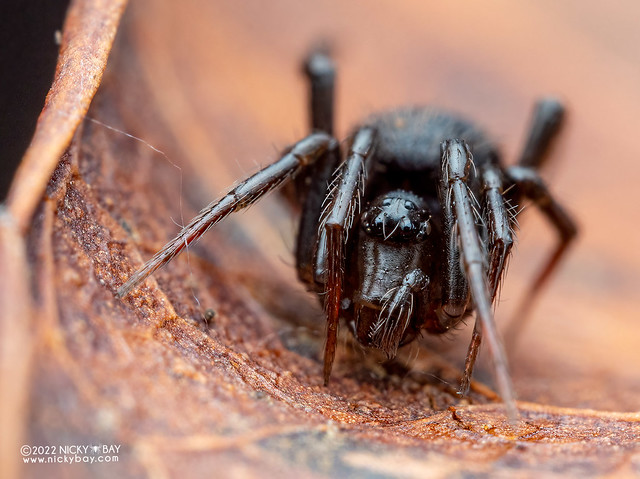

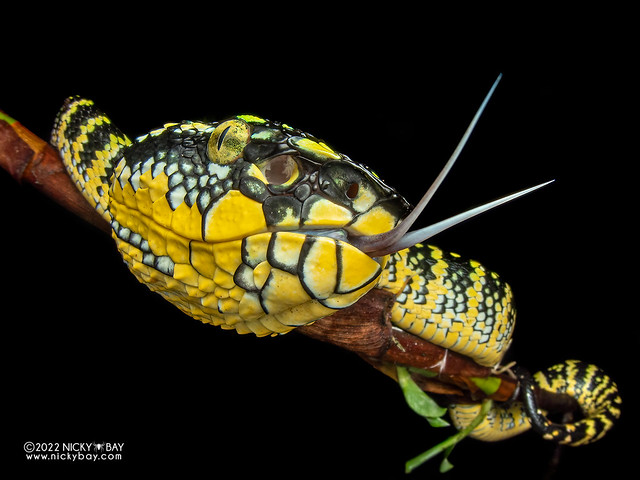

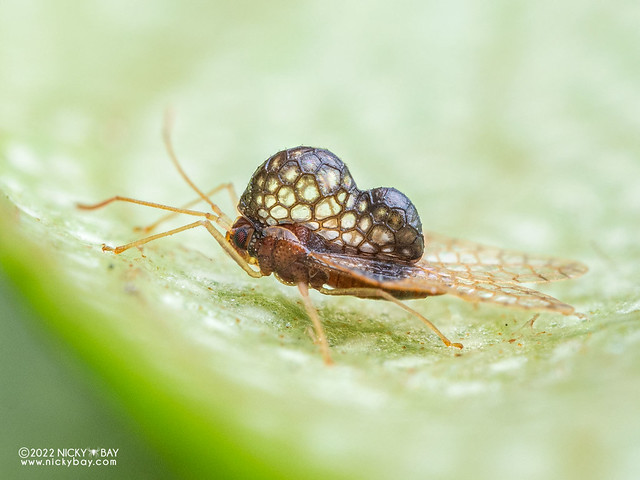


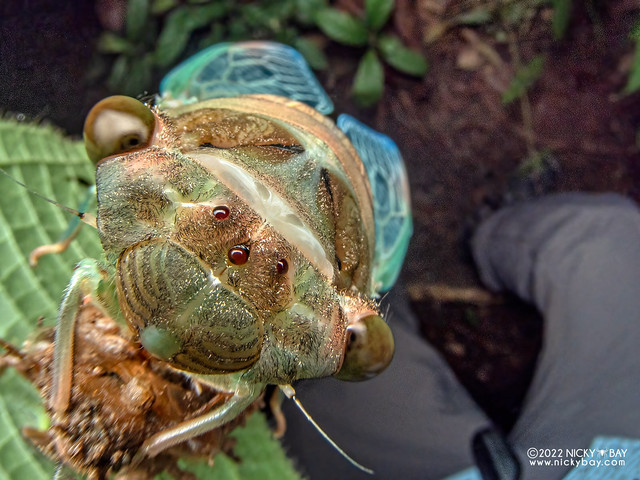

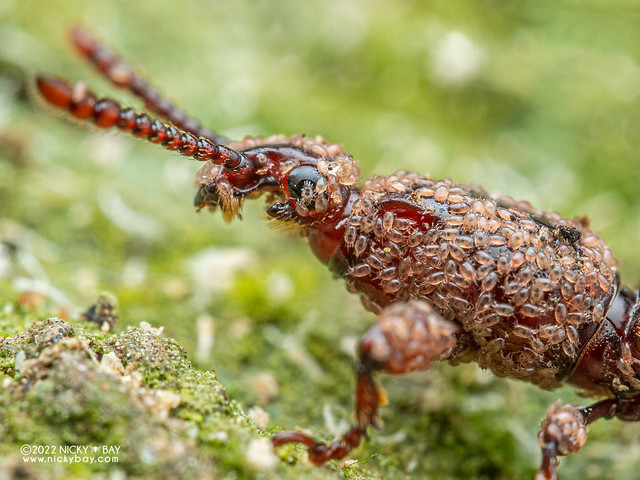
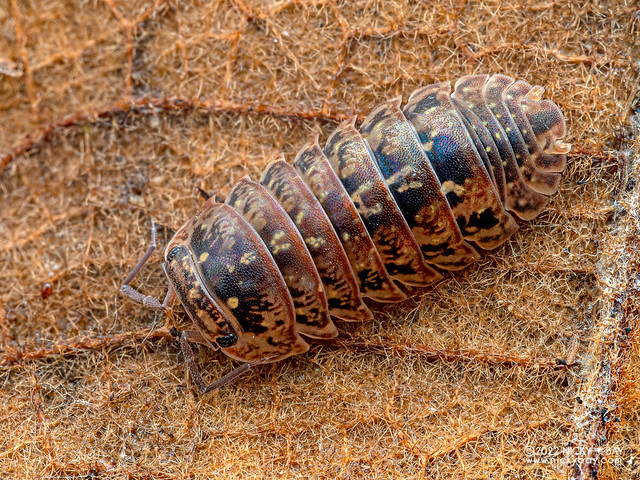





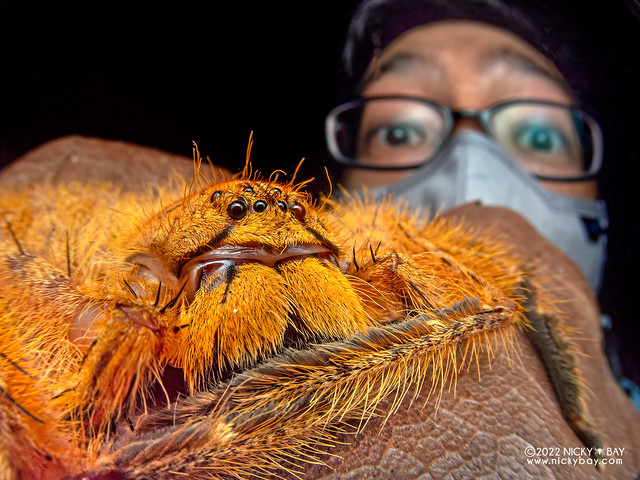
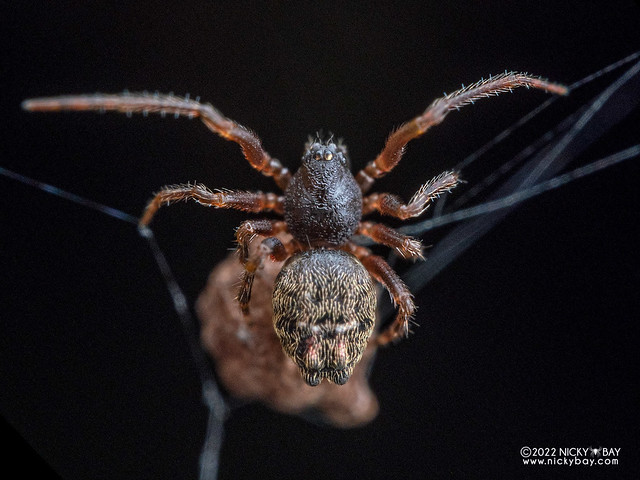




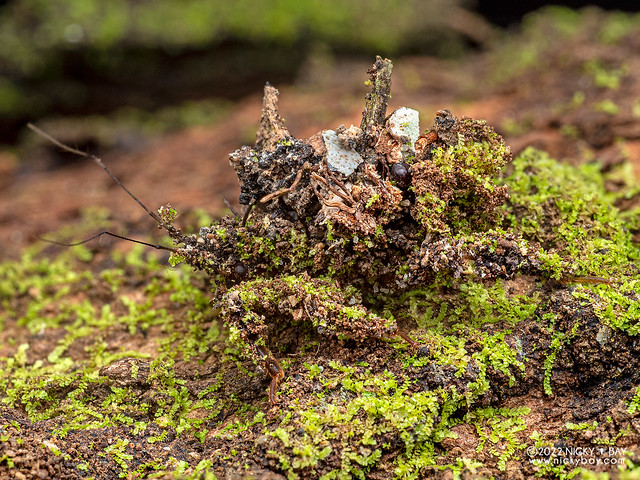

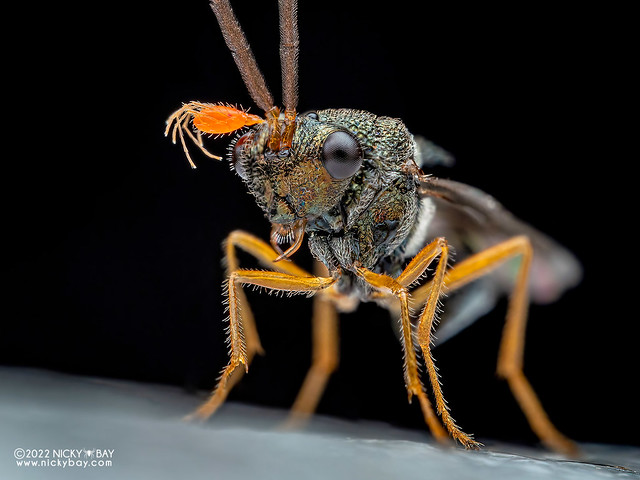





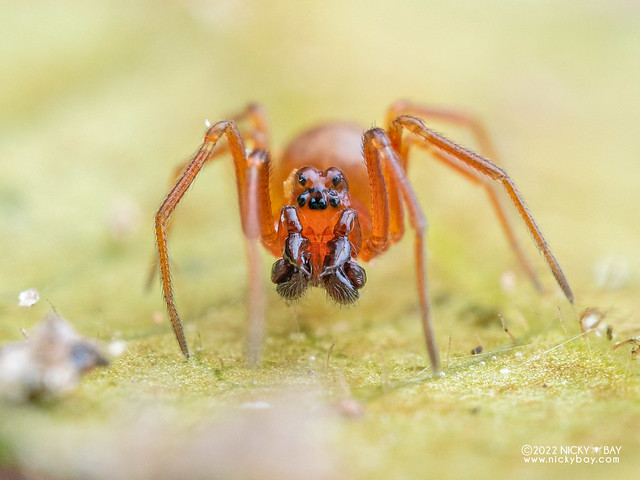

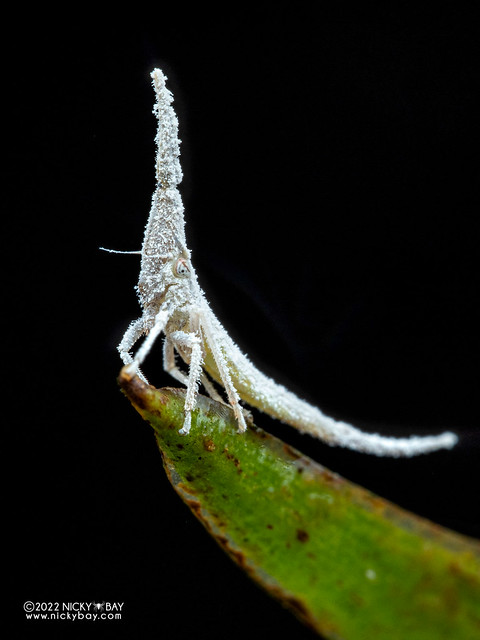

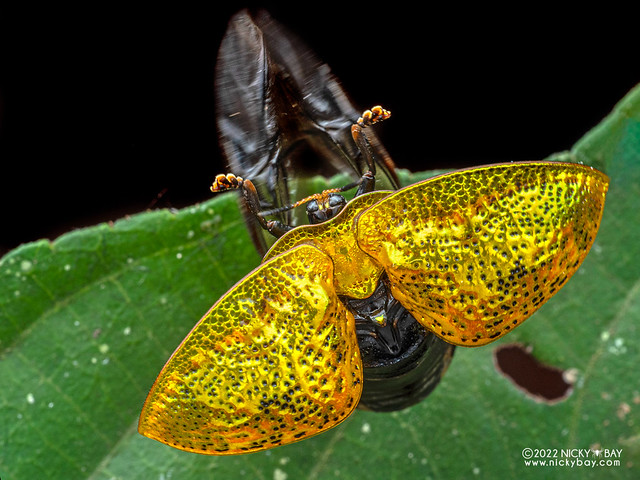


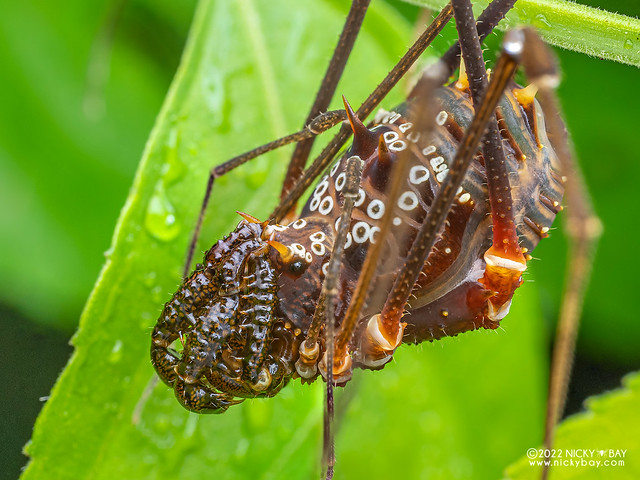

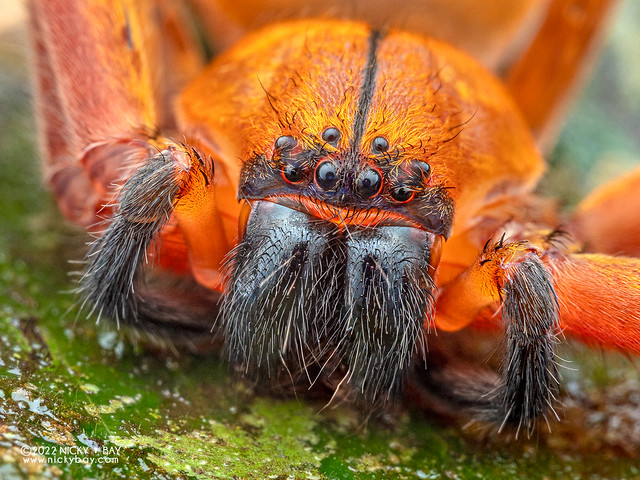

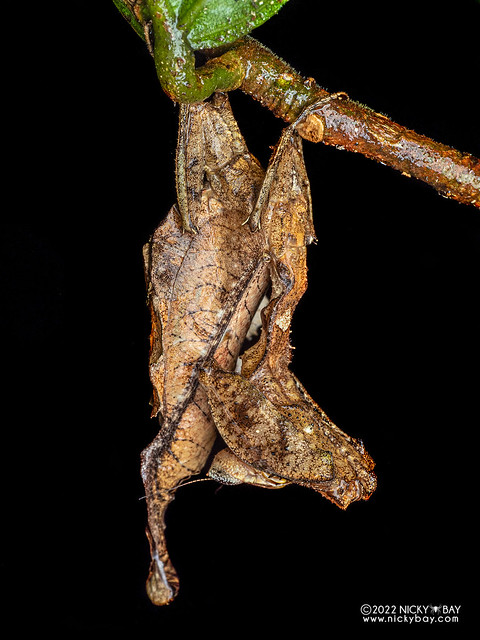
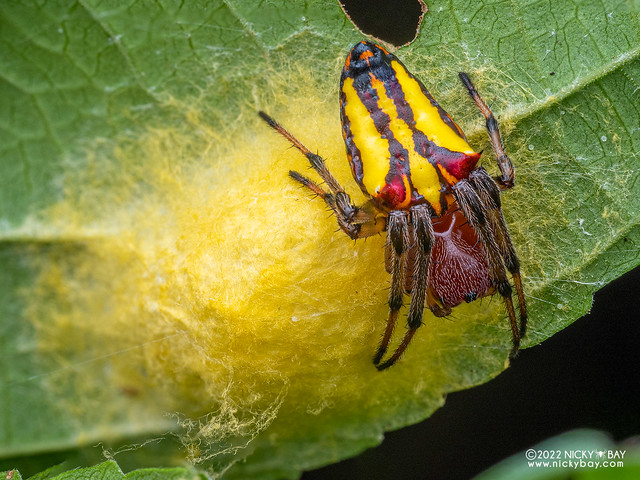

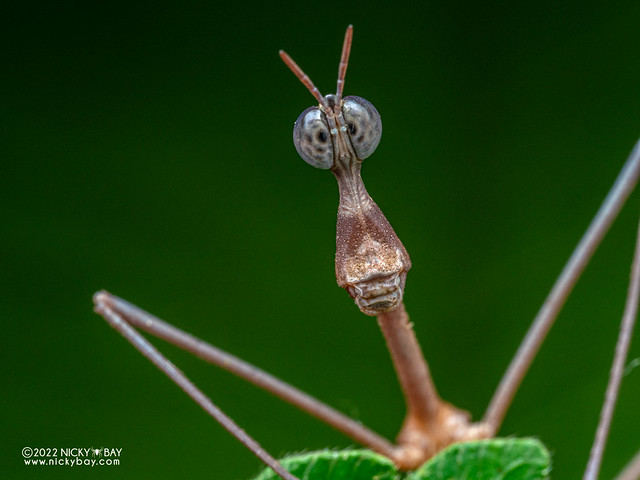

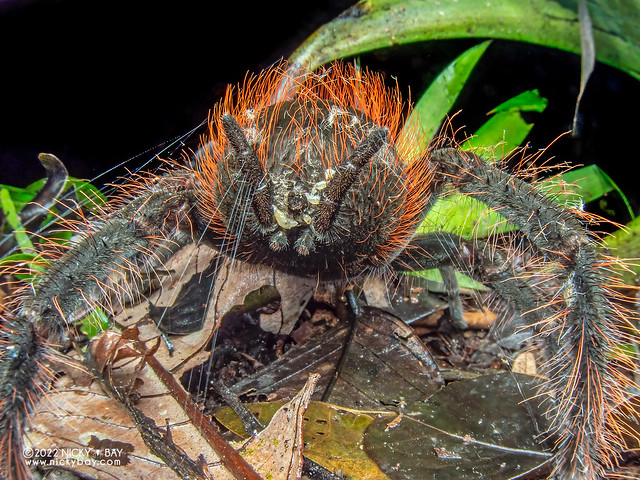
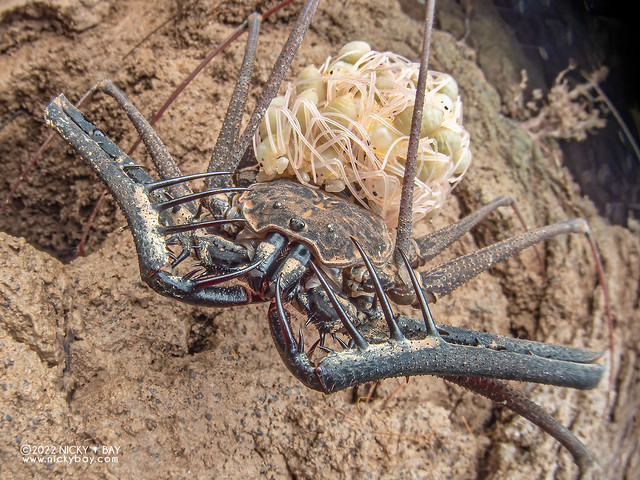



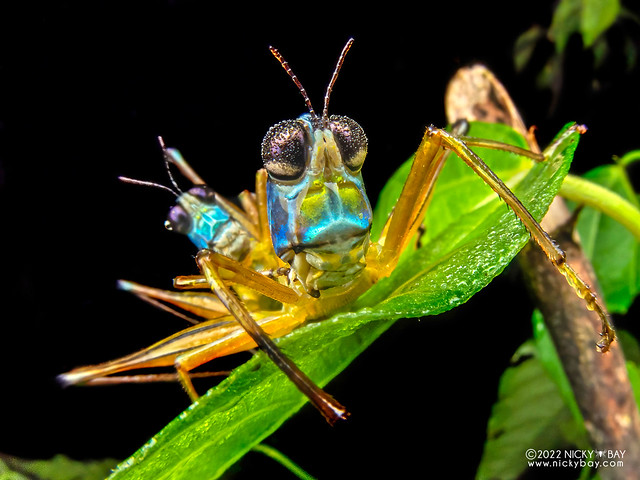
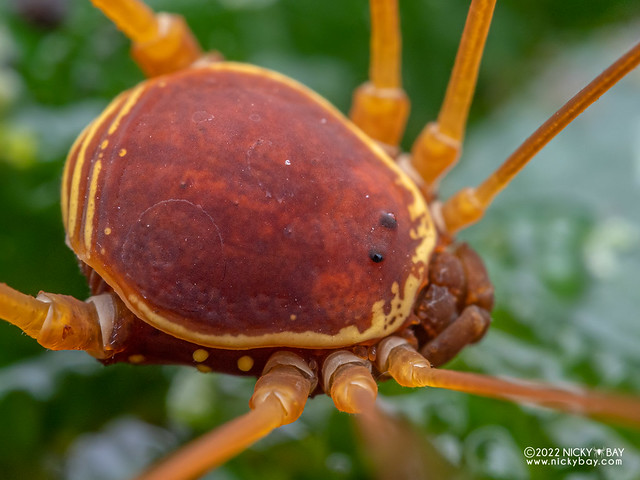

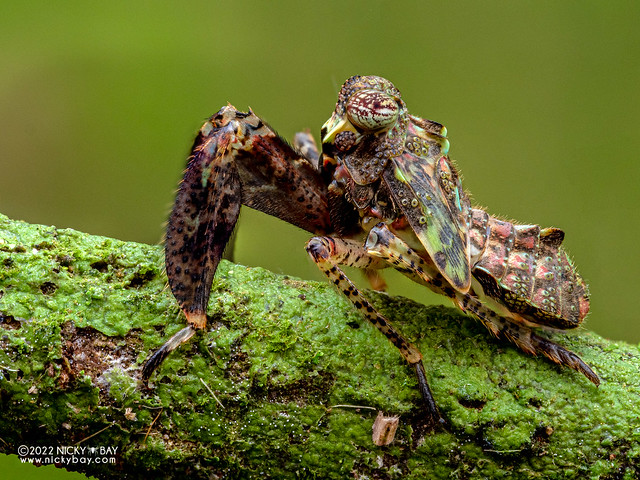
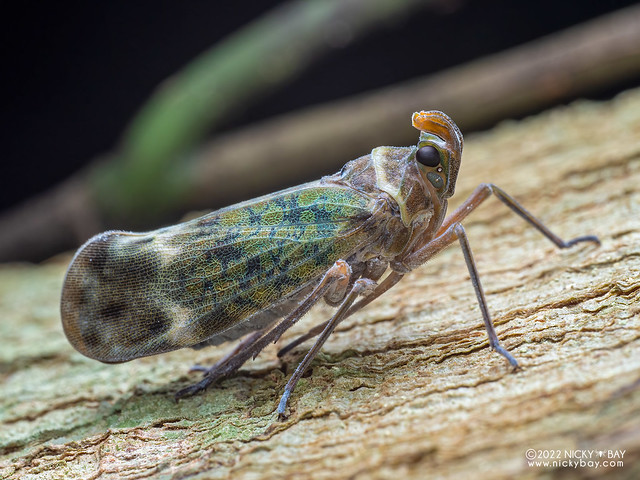


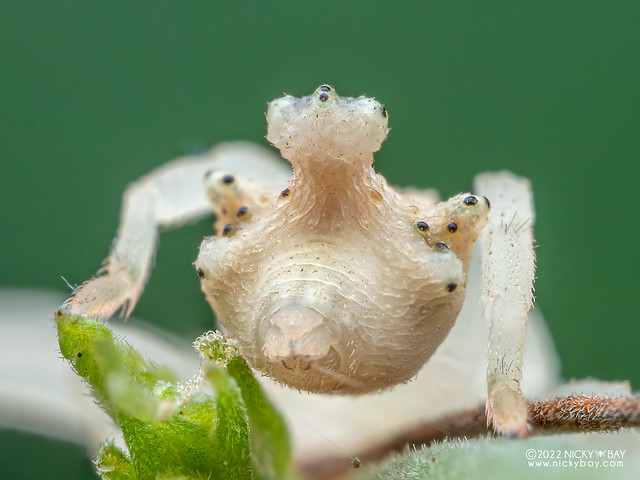
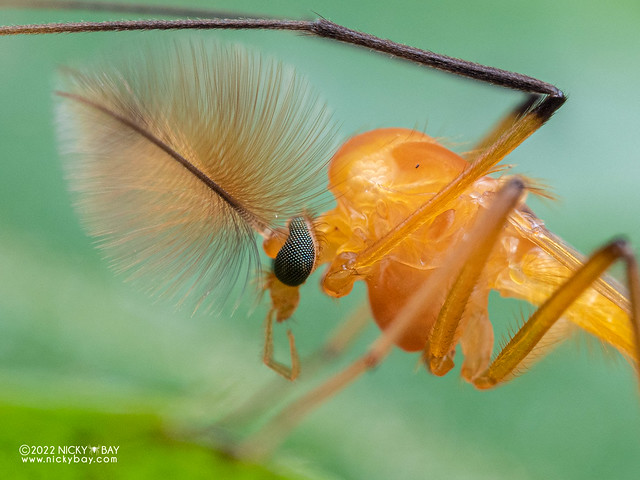

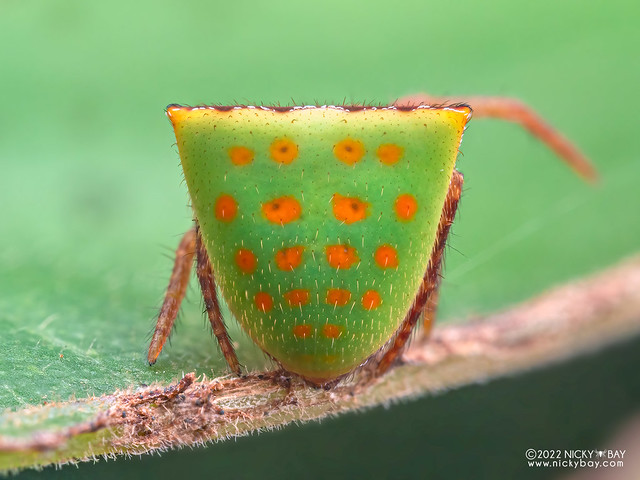






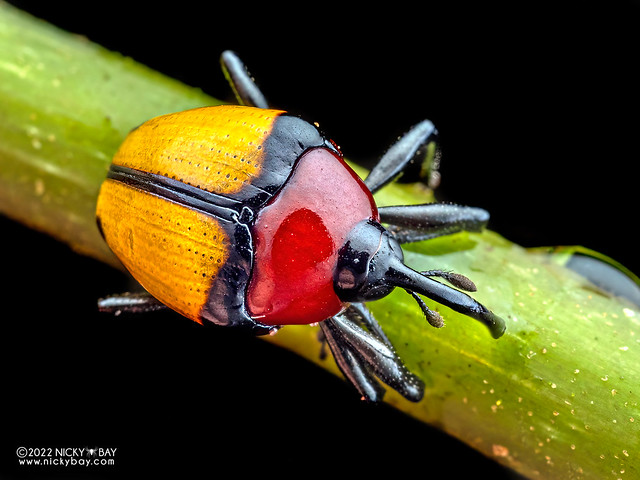
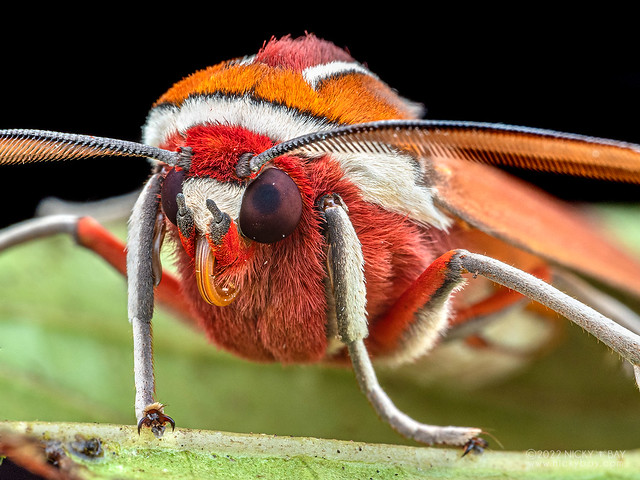

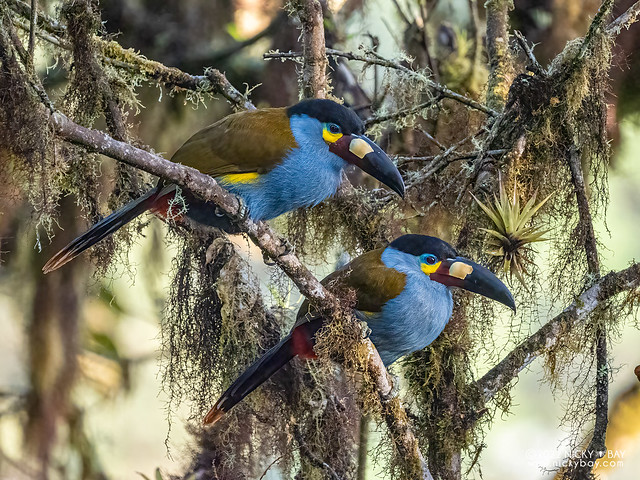
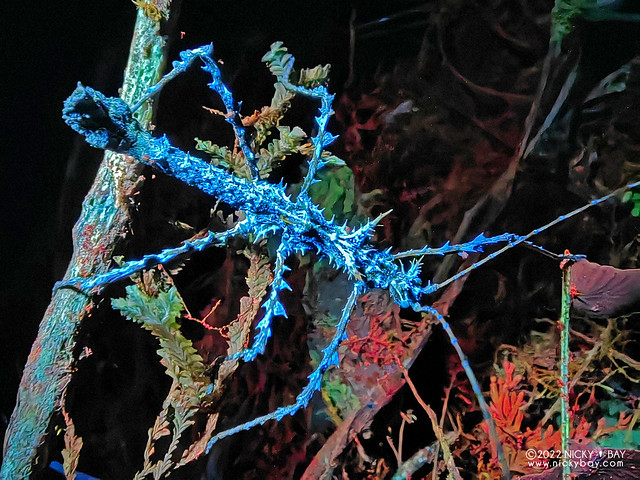


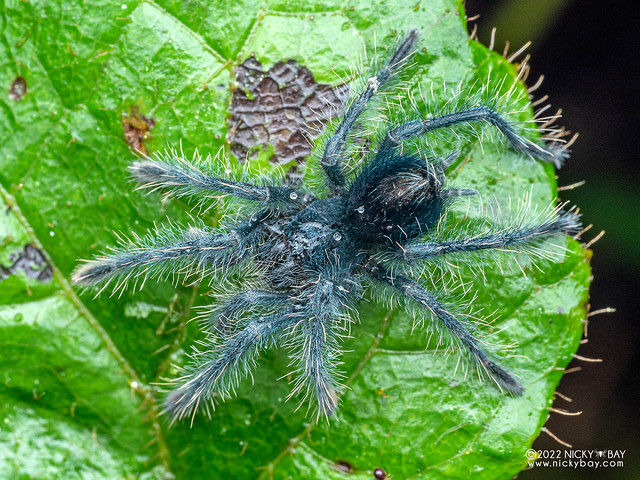

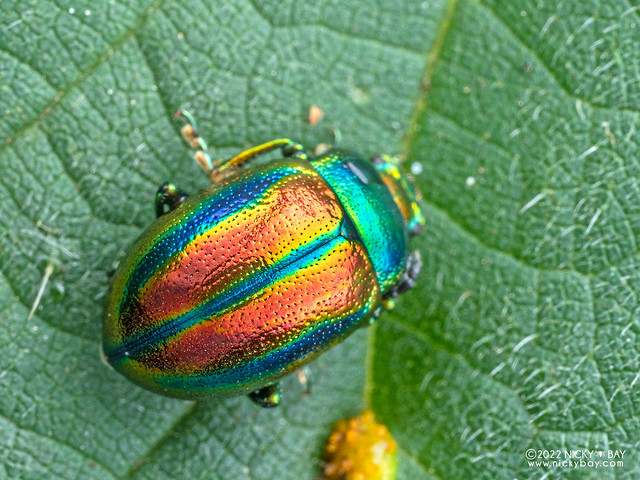

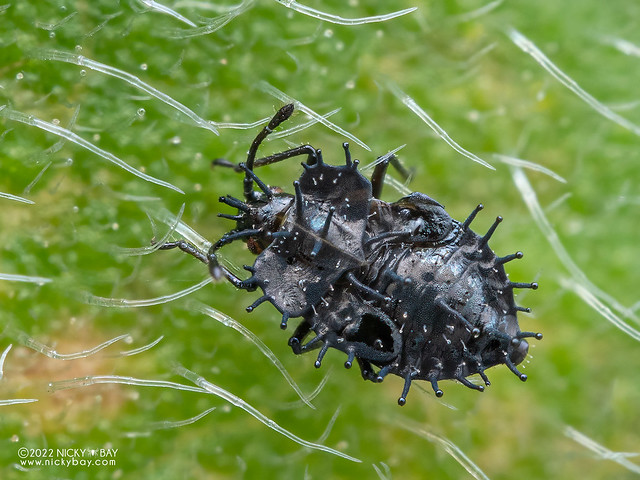
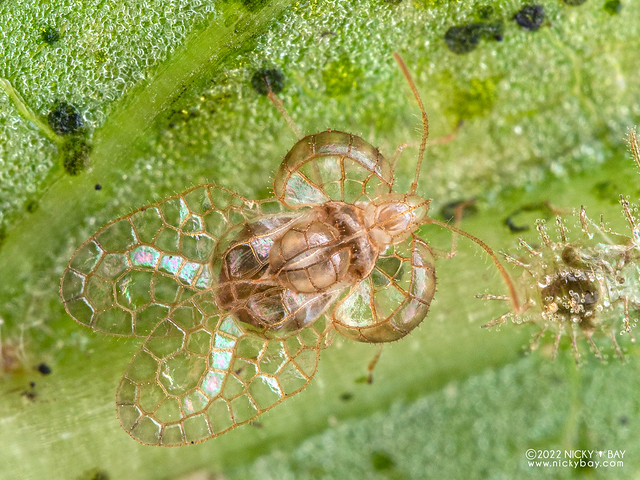


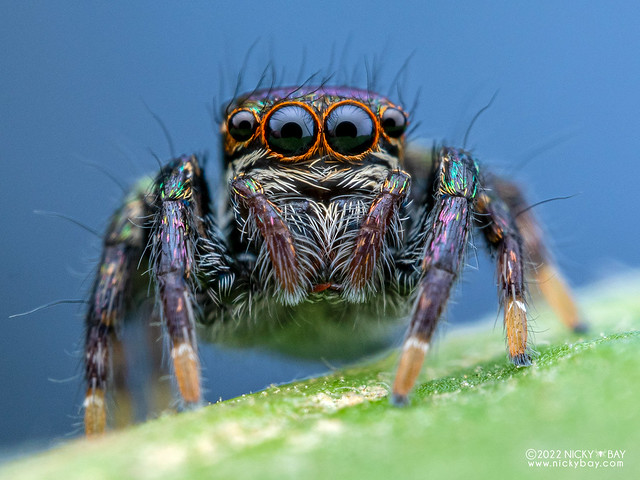

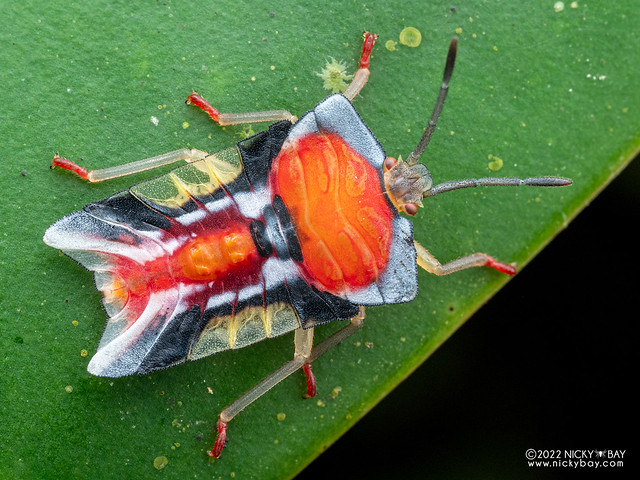
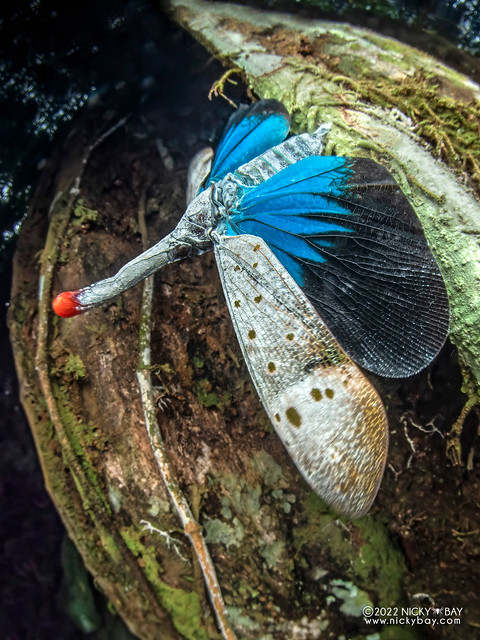
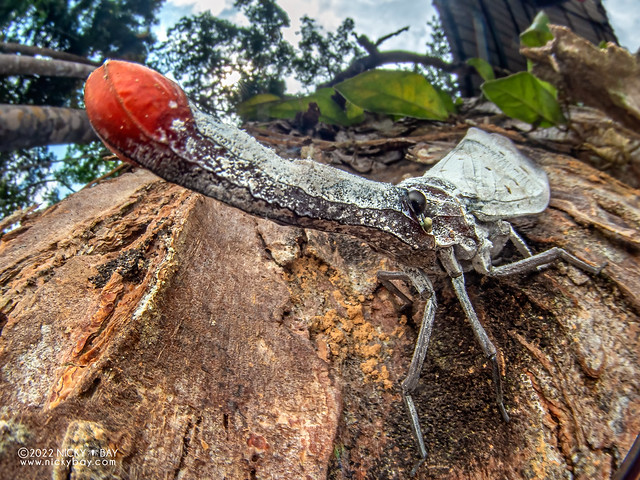
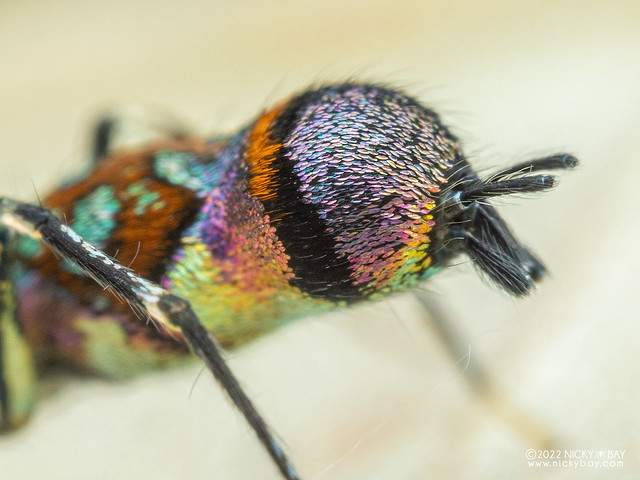
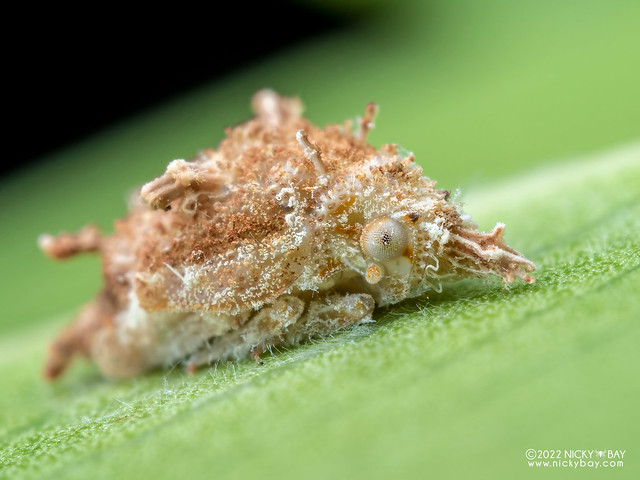
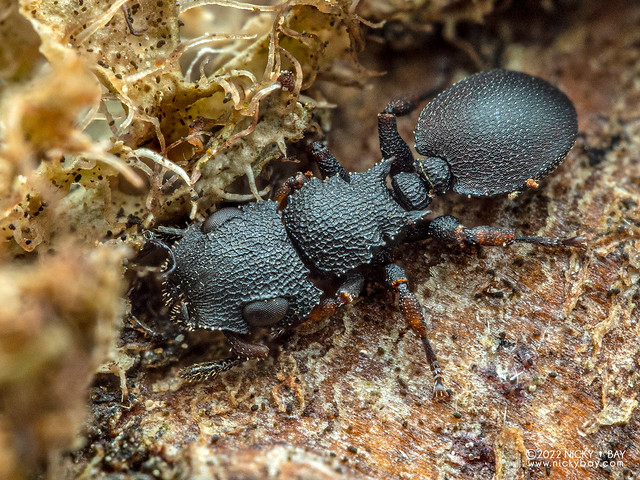

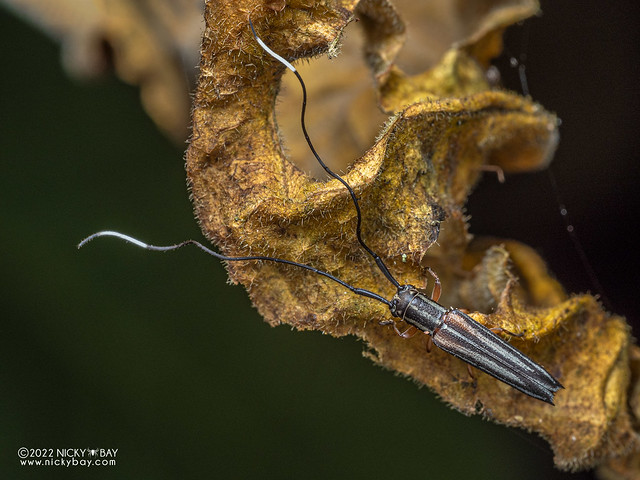



Bye Bye 2022!
Things were certainly ramping up after the relaxing of COVID-19 measures and I managed a couple more field trips. In 2023, I plan to get the kids involved in some of the field activities. I’ll probably be less productive, but who knows what’ll come out of it? 😁
Do subscribe to the mailing list (form on the right for desktops, or below for mobile) to keep yourself updated!

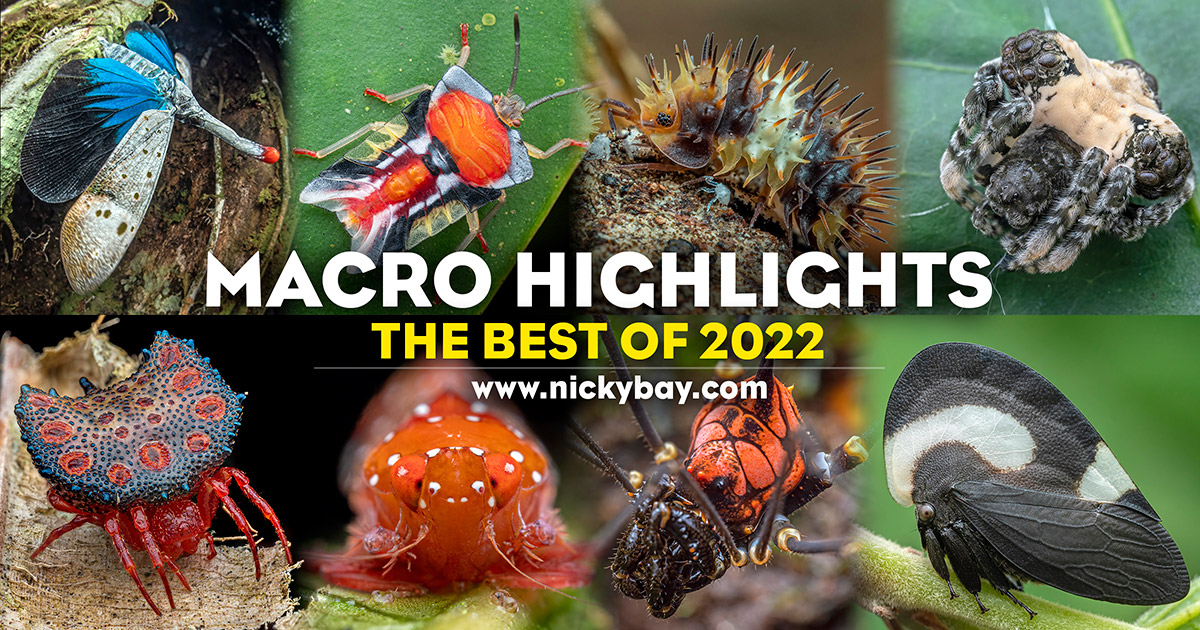
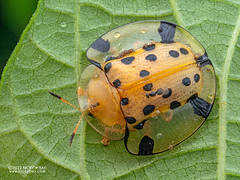


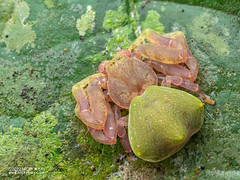



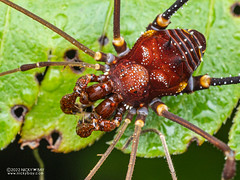


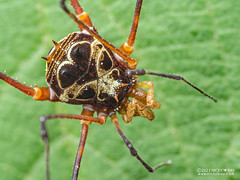
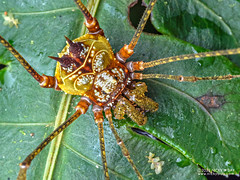


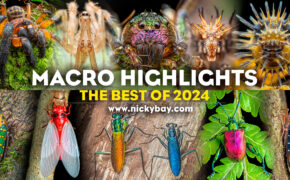

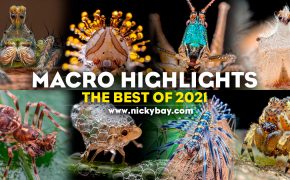












Jeanne Shirley
You mentioned online instruction. Where is this and how do you sign up?
Nicky Bay
Hi, those were ad-hoc workshops and talks organised by other companies, societies or groups where I come in as an invited instructor. For those, they would normally send the invites to potential participants so I don’t post about all of them unless requested by the organiser. If I do post and it is available to an international audience, it would usually be on Facebook and Twitter.
Henry Robison
I loved seeing your top 100 photos of 2022! I look forward to every one of your posts as your photos are so beautiful. Please continue to post items about your workshops, BugShot, and checklists of the various groups of spiders and insects you cover. Again, thanks for posting your photos from 2022.
Lisa
It took me two days to finish this post! I had to do it in sessions because I was lingering over these exquisite creatures. Thank you!!!
Carl Olson
Thanks for opening my eyes to your spectacular world. I’ve been an entomologist my whole life and have enjoyed the American fauna and the Biology here. But then you share the amazing world you photograph and I wonder how anyone cannot appreciate the little world. When I taught and lectured docents I shared some of your delights and hopefully turned people into Nature nuts, a good thing.